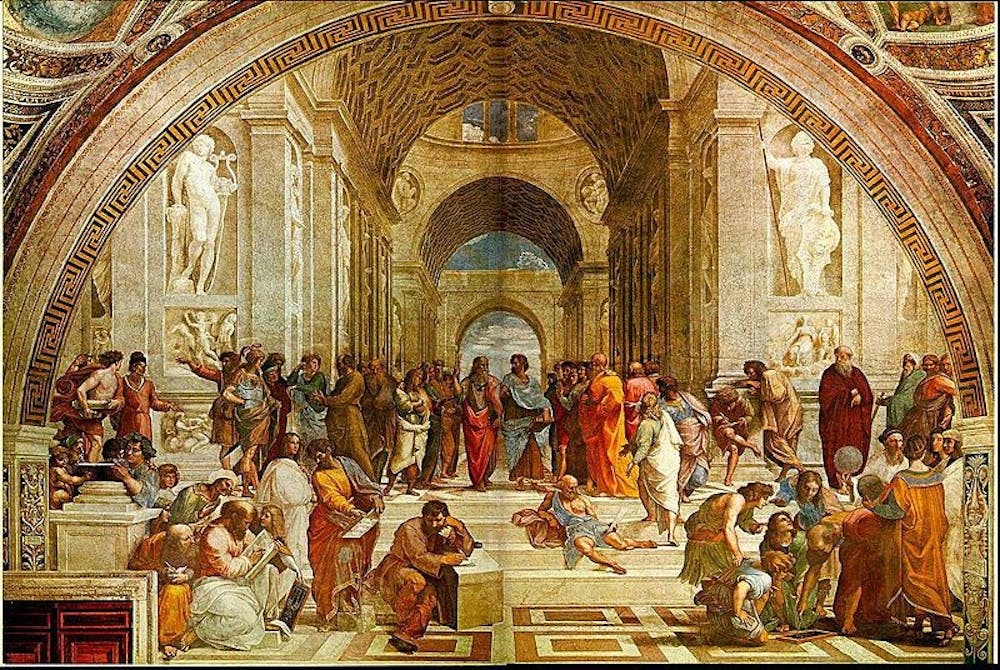Out of darkness sprang new life. It came in the form of the Renaissance. The Renaissance gave a breath of fresh air into art. It fostered scientific knowledge, humanism and nostalgia for the classics. It began in Italy, around the 1400s, and eventually caught fire and spread to the rest of Europe by the 16th century. However, today’s blog will be focusing on the “Teenage Mutant Ninja Turtles,” or more commonly known as a few of the Italian Renaissance masters: Donatello, Leonardo da Vinci, Michelangelo and Raphael.

First up, we have Donatello. Donatello (1386-1466) was an Early Renaissance sculptor. He laid the groundwork in recapturing what the Greeks and Romans did in sculpting: presenting the human figure in a more realistic way. He used the Classical technique of contrapposto (weight shift) in his figures. His sculptures were life-like in scale and in look. It was almost if they had a skeletal system under all that stone. Then Donatello created his “David.” It was the first freestanding nude sculpture since the Classical period. It is anatomically accurate and life-sized. This is what set the fascination with realistic sculptures in motion.
Next, we have Leonardo da Vinci (1452-1519). Everyone knows this mad genius: an engineer, an inventor, an artist and a true Renaissance man. In fact, he is considered the Renaissance man. He is an artist of the High Renaissance. He left more than just art behind when he died, he left a whole slew of inventions, creations and most of all, he left behind a way of thinking. His most famous art piece is, hands down, the” Mona Lisa.” The “Mona Lisa” in many ways set the standard of Renaissance portraiture. The subject, the woman, is no one important as suggested by her costume. But, what it lacks in “wealth,” it is makes up for with feeling and realism. Away with the stiff portraiture of noble women. Welcome the enigmatic smile, the relaxed and natural pose, and the anatomically accurate figure that is the “Mona Lisa.” Hello to Michelangelo (1475-1564). Or shall we call him the Divine M. Michelangelo believed sculptors were the most godlike. They are able to liberate beings from the marble that traps them. He always carved his sculptures from one block of marble. This is an absolutely difficult task, as the risk of fracturing and cracking becomes greater and greater as you near the end of chiseling. Most sculptors would sculpt pieces of the statue from different stone and then assemble it all into one, but Michelangelo would never do that. Michelangelo is written as a brooding and solitude-seeking individual. He was always trying to become better and better. He knew no limits. You can see all the glory that is Michelangelo in his “Pieta.” Look at how Christ’s body drapes over the Virgin Mary. This sculpture is in a pyramidal composition with the Virgin Mary echoing Classical idealisms. To offset the brooding Michelangelo, we have the adored Raphael (1483-1520). Raphael was definitely a lady’s man—constantly trying to please his fans. If he were in high school today, he would definitely be awarded with the superlative of “Most Popular.” Raphael is the culmination of all that is the High Renaissance. He used the pyramidal composition, played with shadows and light, and imparted dynamisms into all his figures. He was wildly successful and hordes of people worshipped the ground he walked. His most prominent work is the “School of Athens.” It is balanced, well thought out, dynamic and fuses paganism and Christianity. And just for fun, see if you can figure out who inspired that brooding fellow leaning on a hunk of marble. You can reach the blogger at mmtran@asu.edu
You can reach the blogger at mmtran@asu.edu








